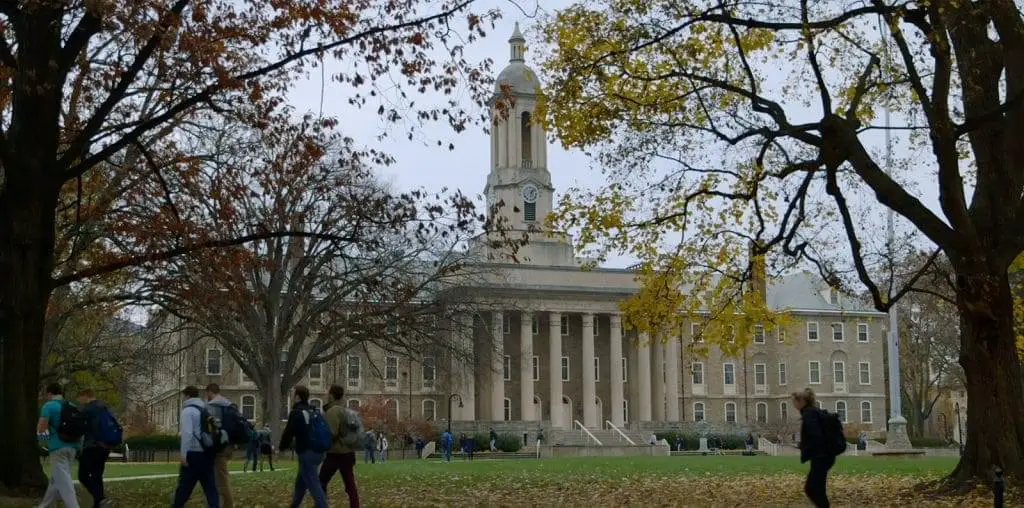
A century and a third after forgotten Millard Fillmore remarked that revolutions do not necessarily bring freedom, a decade and a half following Lennon and McCartney’s innocently prescient “lovers and friends I still can recall, Some are dead and some are living, In my life I’ve loved them all,” AIDS was brought to public notice. Not always, indeed, but often enough, revolution breeds excess and counteraction, until loose synthesis is achieved.
Weaving interviews and historical clips, documentary director/coproducer Joseph Lovett’s “Gay Sex in the 70s” chronicles more a dozen years’ experimental sexual abandon than it does the sudden fearful toning down that ended the period. Not intended as cautionary so much as an attempt to show the heady post-Stonewall feeling of liberty and affirmation, it would portray for a younger generation the hundred-eighty-degree passage from closeting and channeling individual preference, to openly flaunting it, “from repression to celebration in a very short period.”
Though not old, archival material is largely black-and-white stills, beautiful chiaroscuro illustrative of interviewees’ voices. Artists, architects, activists, photographers, writers, professors, doctors, CEOs, filmmakers, they remember the exhilaration of finally being able to find out who and what they were, in New York freedom from Alabama farm or Tampa, Florida, roots.
Hindsight takes an ominous hint from Barton Benes’s sifting through his opening collection of ceramic shards bearing photos of some of the friends who are now dead. But he, and those many who speak throughout, mostly gay men in middle age but also a few women and heteros, are good humored about the “lot of public sex back then.” To shots and drawings of then stylishly overmuscled gays, they wistfully recall the beginnings along Lower Manhattan’s pre-renewal waterfront and in its Meat Packing Area, the sunbathing and frank cruising and coupling on piers and in warehouses, the mass gropings of pairs in the darkened trailers of parked trucks.
They speak of pickups so numerous and so casually quick that between the subway, for instance, and an arranged dinner date, the other had accompanied you to your apartment, had sex, and gone. Fondly as anyone revisiting the reckless adventure of a youth now past, they talk about the various types of West Village bars such as Man’s Country, Badlands, the Anvil, the Ramrod; about the Loft, Paradise Garage, Studio 54, Hurrah, International Stud and Saint, clubs where blasting disco music invited and united mixed races and sexual orientations to jammed dance floors; of gyms and bath houses like the New St. Mark’s or the Ansonia Hotel’s Continental, where Bette Midler sang and celebrities applauded.
The hormone in this “life [that] was a pornographic film” is pure testosterone. The lower-profile lesbian world is left untouched as the film sails out to the summer paradise of “an enormous feeling of brotherhood” at Fire Island’s Cherry Grove.
Individual or collective, memory selects and distorts, and non-fiction as well chooses what fits a particular point of view. Whether this sexual and cultural change was so pervasively complete as the film would lead one to believe, is, however, immaterial: its participants believe it to have been so, and within certain limits its effects were undeniable.
“Natural progression,” shame replaced by joy, meeting interesting people, say the interviewees. But they also mention the loss of any courtship ritual and most stable mating in going at sex like birds; the violence in the dark so that, “lucky if you got out with sex and life,” one left wallet at home and kept only an address written in a pocket; the unsanitary conditions, the smells, the vast array of drugs; and, “flash forward five-six years, and everyone at that party was dead.”
The wages of Sodom’s sin, according to the self-righteous intolerance of the moralistic right, were paid in full when AIDS ended all that. Things would never be the same again, in certain places and within certain limits, and tides have since turned in other ways. Puritanism is nowhere near dead or defeated, but, clearly not for most mainstreamers, Lovett and crew’s camera records a decade, a movement, and an important battle against Blue Meanies and bluenoses.

